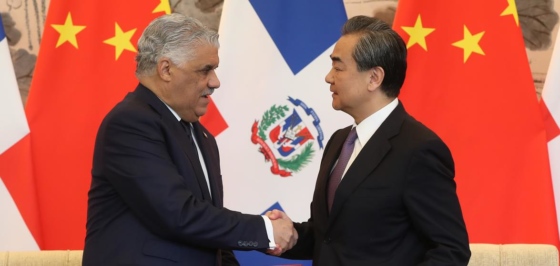Dominican politics are vibrant yet patrimonial, asserted Rosario Espinal, speaking at the Inter-American Dialogue. On April 23, the Dialogue, in cooperation with the Global Foundation for Democracy and Development (GFDD) and the Embassy of the Dominican Republic, hosted a roundtable exchange between experts Bernardo Vega, Eduardo Gamarra, and Rosario Espinal on the Dominican Republic’s upcoming presidential elections on May 20.
Vega noted that politics are very polarized in the Dominican Republic. The two main parties, the Partido de la Liberacion Dominicana (PLD) and the Partido Revolucionario Dominicano (PRD) received 94.3 percent of the total votes in the last presidential elections. If the recent polls and the parties’ voting share remain consistent with the previous election, the next president will be elected in the first round of voting. Espinal mentioned that unlike other Latin American political parties, the PLD and PRD are powerful and active, and the majority of the Dominican population identifies with one of them. This means that the small undecided minority, which made up only 5.6 percent of the votes in the last presidential election, will likely not play a major role.
This race illustrates that there are no “new faces” in Dominican politics; both Danilo Medina, the PLD candidate, and Hipólito Mejía, a former president and the PRD candidate, were presidential candidates for their perspective parties in 2000. Vega also noted that the parties and their candidates have very similar ideologies and platforms, with both backing an IMF agreement and the privatization of the country’s electrical companies.
However, structural difference between the two parties may explain Medina’s lead. Gamarra argued that the PLD is united behind Medina and Leonel Fernandez’s successful macroeconomic policy record gives the PLD the upper hand over Mejía, who is well known for blunders during the 2003-2004 economic crisis. Espinal elaborated that, by choosing First Lady Margarita Cedeño de Fernandez as his running mate, Medina further tied himself to the current administration. In contrast, the PRD is not as homogenous as the PLD and Mejía is vulnerable to accusations of corruption in his previous administration.
Corruption plagues Dominican politics at every level. Espinal characterized the election as a “contest between two clienteles” as both parties compete for the spoils of governmental resources. In fact, Espinal argued that the PRD’s absence from the presidency for eight years increases support for Mejía from that sector of society that is “fed up” with being left out of governmental benefits.
Still, both Gamarra and Vega identified Medina as the likely winner, with recent polls giving him around 49 percent of the vote. This would mean that the Dominican Republic will have a united government, as the PLD controls both chambers of the National Congress. However, a Medina victory would mean four more years out of power for the PRD, which could spark social unrest. A Mejía victory, on the other hand, would ease political tensions by restoring the PRD to power, but as Vega pointed out, the PLD-dominated Congress could make it difficult for Mejía to govern. This could lead to political gridlock and instability for the Dominican Republic.
Finally, Espinal noted that holding presidential elections every four years instead of two could reduce corruption in politics. By pushing the elections two years into the future, Espinal believes that the ritual clientelistic system will break down. Two year elections are a “distraction” to governance. Furthermore, social protests, which usually occur in non-election years, will create more pressure on the government to take action and involve the excluded members of society into national programs.




















